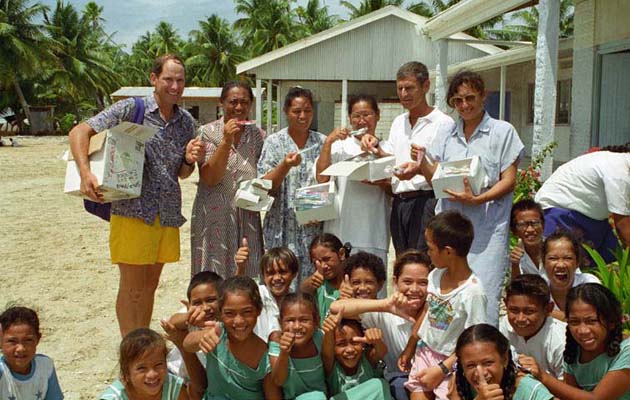John Neal explains how he found himself helping the locals he visits on his remote cruising adventures

Being involved in improving the quality of life of the people I met, even in a small way, was very rewarding. No longer was I just a tourist on a yacht – I was welcomed into the community at a much deeper level
When I first set off yacht cruising on an Albin Vega 27, aged 22, I had my hands full just keeping the boat going and absorbing the incredible experiences. A couple of years later, having mastered the basics, a doctor on an isolated island asked if I would take him to several other remote islands that had no air service. The doctor conducted health surveys, provided medical treatment and gave each child a toothbrush, for which the communities were very grateful. It changed how I thought about cruising.
Being involved in improving the quality of life of the people I met, even in a small way, was very rewarding. No longer was I just a tourist on a yacht – I was welcomed into the community at a much deeper level.
It was always pleasing to be shown, or hear about, projects that yachtsmen have started or contributed to. Given the current level of communication within the cruising community, my wife Amanda and I never hesitate to ask elders, teachers and health workers for requests that we can relay to future crews.
Travel guides such as Lonely Planet, Rough Guides and Bradt provide insights into foreign cultures. Alternatively, bulletins from Seven Seas Cruising Association (www.ssca.org) include advice from cruisers in remote areas about how future sailors can make a difference. The cruising website www.noonsite.com posted our appeals for the purchase and delivery of schoolbooks and supplies to remote schools, which has been very successful.
We also go direct to other locals. In many countries, you clear customs in a larger port or town, so I always get clearance officers to recommend interesting places to visit. This has resulted in requests to deliver greetings, letters or packages to family members on distant islands.
Village protocol
When visiting a village for the first time, leave your camera in your backpack and don’t dress in flashy or skimpy clothing. Once ashore, ask to speak to the chief or a village elder. Always ask permission to anchor, explore ashore and swim in their waters.
Traditionally, some destinations require visitors to present a small gift. In Panama’s San Blas Islands it is flour or sugar. In the outer islands of Fiji it is a bundle of kava roots and in New Caledonia fabric is the best gift. Don’t hesitate to ask elders, schoolteachers or clinic staff if there is anything in particular the village requires.
There are some basic rules on what is inappropriate for your first few visits to a village. It’s best to wait until you’ve got to know some of the villagers before you take photos. Even then, asking permission is appreciated – in some Caribbean locations the sight of a camera has instantly turned our peaceful encounter into a hostile one. Passing out sweets or coins to children is not a good idea, nor is serving alcohol to villagers who visit your yacht.
Many remote cruising destinations lack basic healthcare. Where they exist, local health workers are frequently short of essential supplies and we’ve often returned with medical provisions or made sure supplies were delivered by sailors following us. Requested supplies are usually basic things like toothbrushes, sterile gauze dressings, roller gauze, topical antiseptic solution, antibiotic cream, burn ointment and sometimes oral antibiotics.
Reading glasses may be impossible to get in some areas. We found that the sole income for Kuna women in the San Blas islands is from sewing reverse-appliquéd panels (molas). Without good eyesight they are unable to sew and help support their families. Many Lions Clubs (www.lionsclubs.org) collect and distribute used glasses, so it is worth checking with them.
We have rarely seen parents, village elders and schoolteachers more involved in supporting their children’s education than in three remote villages of Vanuatu’s southernmost islands: Aneityum, Tanna and Erromango. These schools receive very little assistance from the capital, Port Vila, and their headmasters asked if we would help them establish the first school libraries.
They also asked for supplies such as pens, pencils, exercise books, rulers, world atlases, dictionaries, crayons, marker pens and scissors. We emailed the requests to sailors about to depart from Fiji, where goods are available at decent prices, and a week later five yachts delivered the supplies. We returned last season with boxes of books for the libraries.
This is an extract from a feature in Yachting World July 2014



